Tawaf of the Ka'bah at Makkah- The Direction for Mankind
Md. Enamul H. Choudhury, FCA
Published: 2021-01-14 18:21:42 BdST | Updated: 2024-05-15 08:02:13 BdST
The daily five times Salah (prayer) facing towards the Ka'bah at Makkah and Tawaf (going seven rounds of circumambulation of Ka’bah) at the time of Hajj (pilgrimage) and Umrah have great significance for believers in Allah (swt). Tawaf of the Ka'bah at Makkah is not worshiping Ka'bah but it is the direction for human beings to testify that believers submit to Allah (swt), the eternal and self-sufficient master. The Tawaf of Ka'bah is an act of worship prescribed by Allah (swt) like other prayers for remembrance of Him, the creator and sustainer of earth and the heavens and things therein. Allah (swt) says in the Quran:
"It is Allah Who has created seven heavens and of the earth the like thereof (i.e. seven). His command descends between them (heavens and earth), that you may know that Allah has power over all things and that Allah surrounds (comprehends) all things in (His) Knowledge." (Surah At-Talaaq 65:12)
The final revelation from Allah (swt) for human beings is the Quran, the divine guidance for mankind and submission to Allah (swt) must be by following His will. Allah (swt) prescribes a unique system or order of rituals so that believers remain steadfast and strongly connected to Allah (swt) through compulsory Ibadah (system of submission) such as Salah (prayer) Siam (fasting), Hajj (pilgrimage), and Zakah (charity). To perform such Ibadah, Allah (swt) has ordained a set of rules and a unique direction of praying by facing Ka'bah that implies many things- among these declaring no other Ilah (deity) other than the one and only one Allah (swt) and seeking guidance, help, and forgiveness from Him only. Ka'bah at Makkah is the direction for mankind. Muslims worship Allah (swt) alone, and they do not represent Him in any physical form.
The Direction of Galaxies and Universe
Allah (swt) is the creator and the sustainer. He has created the galaxies, dark matter, interstellar matter, the solar system, and the like of the universe. Galaxies vary considerably in size, composition, structure and activity, but nearly all are arranged in groups or clusters and all are moving fast.
Orbit
An orbit is a curved path followed by a planet or an object as it moves around another planet, stars, moon, etc. The earth's orbit is around the sun. According to the NASA source, an orbit is a regular, repeating path that an object in space takes around another one. An object in an orbit is called a satellite. A satellite can be natural, like earth or the moon. Many planets have moon(s) that orbit them. A satellite can also be man-made, like the International Space Station. Planets, comets, asteroids and other objects in the solar system orbit the sun. Most of the objects orbiting the sun move along or close to an imaginary flat surface. This imaginary surface is called the ecliptic plane. As the earth moves in its orbit around the sun, it causes the beauty of seasons.
Orbits come in different shapes. All orbits are elliptical, which means they are an ellipse, similar to an oval. For the planets, the orbits are almost circular. The orbits of comets have a different shape. They are highly eccentric or "squashed." They look more like thin ellipses than circles.
The time it takes a satellite to make one full orbit is called the period. For example, Earth has an orbital period of one year. The inclination is the angle the orbital plane makes when compared with Earth's equator.
An object in motion will stay in motion unless something pushes or pulls on it. This statement is called Newton's first law of motion. Without gravity, an Earth-orbiting satellite would go off into space along a straight line. With gravity, it is pulled back toward Earth. A constant tug-of-war takes place between the satellite's tendency to move in a straight line, or momentum, and the tug of gravity pulling the satellite back.
All creations submit to Allah (swt) and follow His commands. His creation is perfect, balanced, measured, and directed to sustain the system. According to the Quran, these entities have their directions of motion. Galaxies consist of millions and trillions of stars arranged in groups of clusters of spiral shape with a center so that they do not turn apart while also being in motion. In the atomic structure, the tiniest particles, electrons, revolve around the nucleus.
The water cycle, mentioned in the Quran, describes how water evaporates from the surface of the earth (ocean and land), rises into the atmosphere, cools and condenses into rain or snow in clouds, and falls again to the surface as precipitation. The alternation of day and night is a sign of Allah (swt).
These observations of the natural order of things and the Quranic Ayahs (verses) can be used to inductively reason and theorize that all creations of Allah (swt) are in their paths of motion around a central object and He asks mankind, again and again, to ponder about creations.
Importance of Direction
A magnet is a piece of iron with a natural direction that is approximately north as shown on a magnetic compass and various directional instruments use this property. The state-of-the-art directional systems and software such as GPS and Google Maps are essential tools in the modern information age. Depending on the positions of heavenly bodies, a location on earth can be pinpointed. The direction is, therefore, so much of use in the fabric of our society.
Geographers have mapped the world that gives graphic representations of an area on the earth. Globes are maps in a spherical form representing the earth and directions. Other directional instruments are nautical charts, representing coastal and marine areas, hydrographic charts, and aeronautical charts.
Allah (swt) has created human beings and asked them to submit and obey His commands to lead a life according to His will. All prayers and actions (amals) should be directed to please Allah (swt) and as such, He sent Messengers and Prophets with a mission to guide humanity and show the true path or direction. The life cycle of Muslims revolves around five pillars of Islam - Shahada (faith), Salah (praying five times a day), Siam (fasting) in the month of Ramadan, Hajj and Tawaf at least once in a lifetime and Zakah (charity). These rituals keep Muslims in close ties with Allah(swt) to stay in the path directed by Him. One can find here an analogy that heavenly bodies also surrender to His command.

Ka'bah at Makkah is the Direction of Salah (Prayer)
The Quran says mankind is created from single pairs into families, races, colors, and nations. Allah (swt) commands to worship individually and collectively in places of worship. People of different ethnicities and nations must pray collectively in the center of the earth to demonstrate that mankind of all races, colors, and nations are in servitude to Allah (swt) and worship Him alone.
Allah (swt) directs Muslims to come from all corners of the earth to pray all together in Ka'bah at Makkah. In their daily prayers, Muslims also face towards Ka'bah. Ka'bah at Makkah is the center place of the world. At first, an Arab Muslim Geographer, Muhammad al-Idrisi (1100-1165 AD) had drawn the map of the world with the South at the top of the map and North at the bottom. According to this map, Ka'bah was at the center point of the earth. Afterward, a Geographer from the West had drawn the map with North at the top and South at the bottom, after which the Ka'bah was deemed to be the center of the world once again. Allah (swt) has directed Muslims to perform Salah facing towards Ka'bah at Makkah. Anyone living in the East of Ka'bah bows down towards the West, someone residing in the North of Ka'bah bows down towards the South, so on and so forth. Therefore, all people perform Salah facing towards Ka'bah at Makkah, the center point of the earth. This incorporates the concept of physical entities revolving around a central object in its path and direction with an individual’s spiritual essence being in motion and adhering to a direction in submission to the Almighty Allah (swt).
After the Prophet’s (pbuh) migration from Makkah to Madina, he continued to pray in the direction of Bait Al-Maqdis for about sixteen to seventeen months. Later, he received Allah’s command to pray towards Ka'bah (Baitul Haram) at Makkah. Allah (swt) says:
“Verily, the first House (of worship) appointed for mankind was that at Bakkah (Makkah),
full of blessing, and a guidance for Al-‘Alamin (the mankind and jinns).”(Surah Al- Imran 3:96)
“Say, (O Muhammad ) “To Allah belong the east and the west. He guides whom He wills to a Straight Way.” Surah Al- Baqarah 2:142)
Background of The Ka'bah at Makkah
Hajj and its rites date back to Prophet Ibrahim (AH) who was the one entrusted by Allah to build the Ka'bah- the House of God - along with his son Ismail (AH) at Makkah for prayer. The divine book Qur'an has mentioned it as "the Ancient House'' (al-bayt al-`atTq), and frequently also as "the Inviolable House of Worship" (al-masjid al-haram). Prophet Ibrahim (AH) built the first House dedicated to the worship of One Allah (God). It may be noted people at that time used to worship false Gods - the Idols - and on the other hand, Ibrahim (AH) built the House for the worship of one Allah (swt). To instill the oneness of Allah (swt) into the minds, Muslims are directed to pray at Ka'bah as well as make it the direction of prayer (qiblah). Muslims all over the world therefore assemble at annually recurring (Hajj) pilgrimage and Umrah at any time of the year to demonstrate that they all worship Allah (swt). By being physically present at Ka’bah, it gives them intense feelings of Touhid. Allah (swt) says in the Quran:
“And (remember) when We showed Ibrahim (Abraham) the site of the (sacred) House (the Ka'bah at Makkah) (directing him); “Associate not anything (in worship) with Me, [La ilaha illahllah (none has the right to be worshipped but Allah)- Islamic Monotheism] and Sanctify My House for those who circumambulate (walk around) it, and those who stand up for prayer, and those who bow (submit themselves with humility and obedience to Allah), and make prostration (in worship),” (Surah Al Hajj 22:26)
The history of Ka'bah is remembered associating the memories of Prophet Ibrahim (AH), his wife Hagar, and their son Ismail (AH). Ibrahim (AH), according to the will of Allah (swt) left Hagar and the child Ismail (AH) in Makkah as yet another test for Ibrahim (AH) who succeeded in earlier tests. Overcome with anxiety and being thirsty, Hagar began to run frantically between the two hills (Safa and Marwa) in search of water in the hope of meeting a caravan that may be passing that way. Allah (swt) tested her patience and fulfilled her desire with a spring that burst forth in that barren place, the blessed overflowing fountain of Zam-Zam which neither dries up nor dwindles. It is a prescribed duty at the time of Hajj and Umrah to perform the Sa’ee (walk) between the hills of Safa and Marwah to commemorate the patience of Hagar.
Later on, Allah (swt) commanded Ibrahim (AH) to sacrifice his most beloved in dreams and Ibrahim (AH) knew in his heart that it is the command of Allah (swt) to sacrifice his son. The son remained steadfast demonstrating a glittering proof of self-surrender. About this, Allah (swt) says in the Quran:
"And, when he (his son) was old enough to walk with him, he said: "O my son! I have seen in a dream that I am slaughtering you (offering you in sacrifice to Allah). So, look what you think!" He said: "O my father! Do that which you are commanded, In Shah Allah (if Allah will), you shall find me of As-Sabirin (the patient ones, etc.)." (Surah As-Saffat 37:102)
Ibrahim (AH) came out to sacrifice his son at the command of Allah (swt), and his son too, was willing to obey the command of Allah (swt) in total resignation to Him. As he proceeded to slaughter his son and was about to pass the test, Allah (swt) sent down a ram as a ransom for him so that it may be slaughtered in his place. During the 'sacrificial days' of the Hajj Muslims revive the memory by slaughtering animals to reinvigorate the spirit of sacrifice that is so welcome to Allah (swt). Then Ibrahim (AH) and his son Ismael (AH) built Ka'bah, the place of worship for those who believe and surrender to Allah almighty. Allah (swt) mentions in Al Quran as follows:
“And (remember) when we made the House (the Ka`bah) a place of resort for mankind and a place of safety. And take you (people) the Maqam (place) of Ibrahim (Abraham) [or the stone on which Ibrahim (Abraham) stood while he was building the Ka`bah] as a place of prayer (for some of your prayers, e.g. two Rakat after the Tawaf of the Ka'bah at Makkah), and We commanded Ibrahim (Abraham) and Ismail (Ishmael) that they should purify My House (the Ka'bah at Makkah) for those who circumambulating it, or staying (1'tikaf), or bowing or prostrating themselves (there, in prayer." (Surah Al- Baqarah 2:125)
“And (remember) when Ibrahim (Abraham) said, “My Lord, make this city (Makkah) a place of security and provide its people with fruits, such of them as believe in Allah and the Last Day”. He (Allah) answered: “As for him who disbelieves, I shall leave him in contentment for a while, then I shall compel him to the torment of the Fire, and worst indeed is that destination!.” (Surah Al- Baqarah 2:126)
Allah (swt) further says in the Quran:
“And (remember) when Ibrahim (Abraham) and (his son) Isma’il (Ishmael) were raising the foundations of the House (the Ka'bah at Makkah), (saying), “Our Lord! Accept (this service) from us. Verily, You are the All-Hearer, the All-Knower.” (Surah Al- Baqarah 2:127)
“Our Lord! And make us submissive unto You, and of our offspring a nation submissive unto You and show us our Manasik (all the ceremonies of pilgrimage – Hajj and ‘Umrah, etc.), and accept our repentance. Truly, You are the One Who accepts repentance, the Most Merciful.”(Surah Al- Baqarah 2:128)
“In it are manifest signs (for example), the Maqam (place) of Ibrahim (Abraham); and whosoever enters it, he attains security. And Hajj (pilgrimage to Makkah) to the House (Ka'bah) is a duty that mankind owes to Allah, those who can afford the expenses (for one's conveyance, provision, and residence); and whoever disbelieves [i.e. denies Hajj (pilgrimage to Makkah), then he is a disbeliever of Allah], then Allah stands not in need of any of the ‘Alamin (mankind and jinns).” (Surah Al Imran 3:97)
In a Hadith, Hazrat Abu Zar (RA) narrated that:
"I asked Allah's Messenger Mohammed (pbuh) which is the first Mosque constructed? He replied "Baitul Haram" I again asked which is the second? He replied "Mosque Aqsa". Then I asked the age difference between the construction of two Mosques? He replied it was forty years. Then he said at the time of "Waqt", wherever you stay, you must perform Salah (worship) to Allah (swt).” (Sahih Al Bukhari, Chapter-6, Hadith No. 3547)
Reestablishment of Ka'bah for Prayer and Tawaf for Believers
Since the time of Ibrahim (AH), Ka'bah remained as a holy site, but at the time of Mohammad (pbuh), the pagan Arabs used to worship idols placed inside Ka'bah and go around it in an unholy way. After the victory of Makkah, Prophet Mohammed (pbuh) directed to throw out 360 idols and sculptures including idols and portraits of Ibrahim (AH) and Isma'il (AH) from Ka'bah(Baitul Haram). Muslims again started performing Salah five times a day in the Baitul Haram (surrounding Ka'bah and also inside Ka'bah). At the wakth (time) of Salah, Belal (RA) and others used to make Azan (calling for Salah) from the top of the Ka'bah. If the Muslims had worshipped Ka'bah, they would never do such work i.e. walk and stand up at the top/roof of the Ka'bah. When Muslims pray Salah (prayer) anywhere in the world, they face Ka'bah to worship Allah (swt) and they don't worship the structure of bricks, stone, pillar, sand, cement, etc. Similarly, when Muslims perform "Tawaf” around the “Ka‘bah” they only worship Allah (swt) and not the structure of bricks, sand, cement wall and stone of Ka'bah. Ka'bah is not an intercessor but it is a place of prayer built by Prophet Ibrahim (AH).
Present Construction of Ka’bah
It’s quite simple and beautiful. The walls are white marble on the lower half and green cloth on the upper half. The ceiling of the Ka'bah is covered in the same green material as the upper parts of the walls. There are three tall pillars, a small table, and some hanging lamps. The golden ‘Baabut-Taubah’ (Door of Repentance) is on the right. This door opens to the stairway leading to the roof of the Ka’bah. The floor of the Ka’bah is made of marble, most of which is white while some of it is colored.
Hajj (Pilgrimage)
Hajj is a great annual convocation of Muslims in a specific time (Lunar month of Zil-Hajj on 9th, 10th & 11th days) when Muslims perform Tawaf of the Ka’bah, stay at Arafat from morning to afternoon and perform Salah of Zohur (noon prayer) and Asar (afternoon prayer) at a time (at noon) and listen to Khutba (speech), spend the night at Muzdalifah and pray Maghrib (evening prayer) and Isha (night prayer) and then offer Fajr (morning before the sun rises) before moving to Mina to perform other rituals. About Hajj, Allah (swt) says in the Quran:
“And proclaim to mankind the Hajj (pilgrimage). They will come to you on foot and on every lean camel, they will come from every deep and distant (wide) mountain highway (to perform Hajj).”(Surah Al Hajj 22:27)
Hajj is compulsory (Farz) for only wealthy Muslims having sufficient means. For those who perform Hajj and Umrah, it is compulsory to perform “Tawaf" around Ka'bah.
All formalities to be performed for Hajj and Umrah are for submission to Allah (swt). Therefore, a Muslim never worship any structure, portrait, stone, or graveyard. Muslims worship Allah (swt) alone.
Saye (walk) between Safa and Marwah
Saye (walk) between Safa and Marwa is also compulsory (Farz) for those Muslims who perform Hajj and Umrah.
"Verily As–Safa and Al- Marwah (two mountains in Makkah) are of the Symbols of Allah. So it is not a sin on him who performs Hajj or 'Umrah (pilgrimage) of the House (the Ka'bah at Makkah) to perform the going(Tawaf) between them (As –Safa and Al-Marwah). And whoever does good voluntarily, then verily, Allah is All-Recogniser, All-Knower." (Surah Al Baqarah 2:158)
Whatsoever in the Heavens and the Earth Glorifies Allah (swt)
All creations of Allah (swt) besides mankind, such as the galaxies, worlds, heavers, planets and stars, the sun and moon, oceans, hills, trees, animals glorify Allah (swt). This is expressed in the Quran in the very first Aya (verse) of five Surahs. Al Hadid(57), AL Hashar(59), As Saff(61), Al Jumu'ah(62), and Taghabun(64). The verse is as follows:
"Whatsoever is in the Heavens and the Earth glorifies Allah, and He is the All-Mighty the All-Wise."
It means that it has always been the case that everything in the Universe has proclaimed the truth that its creator and sustainer is free from every blemish and defect, every weakness, and error.
In this verse, "Sabbaha" has been used in the past tense, and at another place, "Yusabhu" has been used as both the present and future tenses. It means every particle in the World and Universe have always been extolling the glory of the creator and sustainer in the past, at present, and in the future.
Also, the word “Aziz” signifies a mighty and powerful being whose decrees cannot be prevented by any power in the world from being executed and “Hakim" signifies that whatever Allah does, He does it wisely. His creation, His administration. His rule, His Commands, and Guidance are based on eternal wisdom.
Tawaf (Circumambulation)
The seven-fold circumambulation (Tawaf) of the Ka'bah is one of the rites of the Hajj (Pilgrimage), symbolically indicating that all human actions and endeavors ought to have the idea of Allah (swt) and His Oneness at the center and "Tawaf" around the "Ka'bah" is for the sole purpose to please Him. All worship in Islamic monotheism is around believing in the oneness of Allah (God). To go round something is called circumambulation. By going around the House of the beloved, he wishes to prove that he desires nothing but Allah (swt).
Linguistically, the word is derived from the Arabic verb Taafa (Arabic: طاف) which means “to walk around” or “to encircle something”. Its technical meaning is to perform seven anti-clockwise circuits of the Ka’bah. One complete circuit of the Ka'bah is known as a Shawt (Arabic: شوط).
The Tawaf around the Ka'bah is not a practice of polytheism. It is a form of worship like other types of prayers of Muslims that is prescribed by Allah (swt) and as such Wudu (ablution) is mandatory while performing Tawaf. It is also from the traditions of Prophet Mohammad(pbuh) to circumambulate Ka'bah seven times.
The importance of Tawaf is highlighted in different Quranic verses. In Surah Hajj Allah (swt) says that:
“And remember when We showed Ibrahim the right place of the Sacred House (mosque) and commanded that, “Do not ascribe anything as a partner to Me and keep My House clean for those who encircle it and those who stay in it (for worship) and those who bow and prostrate."(Surah Al Hajj 22:26)
In another Allah (swt) says that:
“And remember when We made this House (at Makkah) a recourse for mankind and a sanctuary; and take the place where Ibrahim stood, as your place of prayer; and We imposed a duty upon Ibrahim and Ismail (Ishmael), to fully purify My house for those who go around it, and those who stay in it (for worship), and those who bow down and prostrate themselves.”(Surah Baqarah 2:125)
The Tawaf is a sunnah (practice) of Prophet Muhammad (pbuh). The following sayings are from Prophet Muhammad (pbuh):
“Circumambulation of the House, going between as-Safa and al-Marwah, and stoning of the Jamaraat was only ordained to establish the remembrance of Allah.” (Abu Dawud 1888)
“Tawaf around the Ka'bah is similar to Salah (prayer) except that you talk during it. So whoever talks in it, then let him not say but good.” ( at-Tirmidhi 960)
“Whoever circles the Ka'bah seven times and prays two cycles will be rewarded as if he has freed a slave. A man does not raise his foot and bring it back down but that ten good deeds will be written for him, ten bad deeds will be erased, and he will be raised by ten degrees.” ( Musnad Aḥmad 27862)
It is out of the question that Muslims who perform Hajj prostrate to any entity or object other than Allah (swt). Whereas every creation in the Earth and Heavens bows down to Allah (swt). The following Ayat of the Quran narrated this:
"Do you not see that whoever is in the heavens and whoever in the earth and the sun, the moon, the stars, the mountains, and the trees and the moving creatures and many of mankind prostrate themselves to Allah. But there are many (men) on whom the punishment is justified. And whomsoever Allah disgraces, none can honor him. Verily, Allah does what He wills." (Surah Hajj 22:18)
Walking around the ‘Ka'bah Anticlockwise
It is prescribed by Prophet Mohammed (pbuh) to walk around the Ka'bah anticlockwise as before from Ibrahim (AH). However, some people offer scientific reasons why this may be the case. It relates to the anticlockwise movement of particles, bodies, and worlds. All the following move in an anticlockwise fashion.
- Electrons around a nucleus
- The blood around the body
- The moon around the earth
- The earth around the sun.
- The planets and the solar system around the sun
- Sun and the solar system around the galaxy
In the act of moving counterclockwise around the ‘Ka'bah, Muslims symbolically move harmoniously with the movements of the whole of Allah’s creation and as those Muslims before they did and will forever be doing into the future.
Talbiyah at the time of Tawaf
Muslims say Talbiyah when they perform Tawaf at the time of Hajj and Umrah Abdullah Ibn Omar (RA) narrated that Talbiyah is:
“Labbaik Allahumma Labbaik, Labbaik La Sharikalaka, Innal Hamda, Wan nimata, Laka Wal Mulk, La Sharika Laka.”
Meaning of the above Talbiyah:
"Here I am O Allah, here I am (means I submit and submit again i.e. ongoing submission) I am obedient to your orders, I respond to your call. You indeed have no Partner, here I am. No doubt, all praises and bounties are Yours and all sovereignty. You have no Partner".
The proclamation of Talbiyah symbolizes Tauhid and that all acts of worship are for Allah (swt). Hence the Talbiyah is the key to all these rituals of worship that the Pilgrims are embarking on. It includes acknowledging that all sovereignty belongs to Him alone and no one else has any true dominium.
Prayer inside Ka'bah
Prophet Muhammad (pbuh) went inside the Ka'bah in the conquest of Makkah. When the Prophet (pbuh) arrived in Makkah on the day of victory, he made Tawaf around the Ka'bah seven times and touched the Hajar al-Aswad. He then had the door of the Ka'bah opened and went inside. Accompanying him were Usama bin Zaid and Bilal. He (pbuh) closed the door, performed non-obligatory prayer and stayed for some time. It signifies that it is a place of prayer.
Hazrat Aisha (RA) – wife of Holy Prophet Muhammad pbuh) – narrated:
“When I expressed the wish to perform Salah (prayer) within the Ka'bah, the Prophet (pbuh) took me by the hand and led me into the Hijr (Hateem) where he said, ‘Perform Salah (prayer) here if you wish to enter the Ka'bah because this is part of the Baytullah.”
The Ka'bah is kept closed during the Hajj because of the overwhelming number of people, but those who visit the Ka'bah during other times of the year are sometimes allowed to go inside. Only non-obligatory prayers like Sunnah and Nafal prayers are allowed inside Kaaba.
Sacrificial of Animal
Sacrificing an animal is to commemorate the incident that witnessed Ibrahim (AH) being ready to sacrifice his son for Allah (swt). It reminds us that our faith should be strong enough to sacrifice our treasures including our life for the pleasure of Allah (swt). If we are ready to sacrifice our favorites like our life and wealth, then the sacrifice of an animal will be fruitful. In this regard Allah (swt) says in the Quran:
“Say truly my Salah (submission), and prayer, Wanusuki (my rites and sacrifice), Wa mah yea wa mamaty (and my living and my dying) are for Allah, the Lord of the Alamin (the whole universe).” (Surah Al An'am 6:162)
Hajar Aswad (The Black Stone)
The Hajar Asawd is the black stone placed in a silver case in one corner (Rukun Al Aswad) of the Ka’bah.”It is neither a part of Hajj nor a part of Umrah. Muslims do not commit idolatry of the stone as they have no intention of gaining any benefit from the stone and neither can it harm them.
The status of the Black Stone is explained by Omar (RA) as follows:
“Hajar Aswad is a stone only. It contributes nothing good or bad of human beings. If Prophet Mohammed (pbuh) could not touch it, I shall never touch that stone.” ( Sahih Al-Bukhari, Chapter 356 and Hadith No. 675)
Hajar al-Aswad is the point of starting and ending Tawaf when one starts Tawaf and finishes each round and thus completes seven rounds. Therefore, Hajar Aswad is also a point of direction of Tawaf.
Conclusion
It is firmly and logically established that “Tawaf" around the " Ka'bah " at Makkah is not to worship Ka'bah but to surrender and make prostration to Allah (swt), the creator and sustainer of the worlds, Lord of the day of resurrection and He who sent down Messengers/ Prophets with scriptures and the final revelation "Quran" for human beings as guidance and so that mankind be ever conscious of Allah (swt).
The fact that Allah (swt) is the one, unique and eternal can be understood from the following declaration of Tawhid, Allah’s absolute oneness in four Ayas (verses) of Quran:
"Say, He is the one Allah. Allah is eternal, the self-sufficient Master, whom all creatures need (He neither eats nor He drinks). He begets not, nor was He begotten. And there is nothing that could be compared with Him." (Surah Al Ikhlas: 112)
The term “As-samad" in the above mentioned Surah occurs only once in the Quran and is applied to Allah only. It embodies the concepts of primary cause, eternity, independent being of Allah (swt) combined with the idea that everything existing or conceivable goes back to Him and onto Him lies the continued existence of everything. Allah (swt) is one and unique in every aspect, without beginning and end. It has its logical correlation in the statement that "there is nothing that could be compared with Him". Consequently, the quality of His being is beyond the range of human comprehension or imagination.
Allah (swt) created Mankind and Jinn for submission to Him and other creations of Allah (swt) surrender to Him too. It is grave disobedience to Allah (swt) if someone takes Sun, Moon, Stars, Trees, etc., or man-made structures as Ilah (Deities). All materialistic philosophies, theories that disregard the sovereignty of Allah (swt) should be firmly rejected by the believers. All prayers must be free from Shirk and therefore Muslims cannot seek help from anybody else than Allah (swt).
Tawaf at the time of Hajj and Umrah is a demonstration of the solidarity of the Muslims and a glowing example when the whole humanity as one submits to Allah (swt).
Muslims believe that Allah (swt) has no equal, so to worship anyone or anything else is considered Shirk (prohibited). Therefore, Muslims worship Allah (swt) as manifested in their Salah (prayers), Siam (fasting), rituals of Hajj (Pilgrimage) as mentioned, Zakah (charity), and through Amelus Salihat (righteous deeds) according to the “Quran” to please Allah (swt).
All systems of Ibadah (worship) in Islam is for Allah (swt) alone with the firm faith (iman) of the oneness of Allah (swt) and that He is the absolute one.
It is Allah (swt) who bestows success and guides to the Straight Path. O Allah (swt), accept this work (the article) as Ibadah. Verily, you are the All-Hearer, the All-Knower.
References:
1. The Holy Quran (Text, Translation, and Commentary) By Abdullah Yusuf Ali.
2. The Noble Quran (English translation of the meanings and commentary) by, Dr. Muhammad Taqi-ud-Din al Hilali and Dr. Muhammed Muhsin Khan.
3. The Message of the Quran, Translated and Explained by Muhammad Asad.Tafsir Al Quran by Mohammad Abdul Hakim and Mohammad Ali Hasan.
4. Tafhim Ul Quran by Sayed Abul Ala Maududi
5. Sahih Al Bukhari, Chapter 6, Hadith No. 3547
6. Hadith No. 240, Vol. No. 1, Muslim.
7. “The Fifth Pillar of Islam Hajj”, Abul Hasan Ali Nadwi
8. Britannica Encyclopedia
9. NASA Article on Orbit
10. Abu Dawud 1888
11. At Tirmidhi 960
12. Musnad Ahmed 27862
13. Sahih Al Bukhari. Chapter 356, Hadith No. 675
----------------------------------------------------------------------------------------------------------------------
The writer is a Senior Chartered Accountant. (email: enamhc@gmail.com)
সকল প্রকাশিত/প্রচারিত কোনো সংবাদ, তথ্য, ছবি, আলোকচিত্র, রেখাচিত্র, ভিডিওচিত্র, অডিও কনটেন্ট কপিরাইট আইনে পূর্বানুমতি ছাড়া ব্যবহার করা যাবে না।



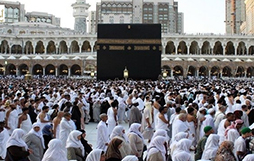
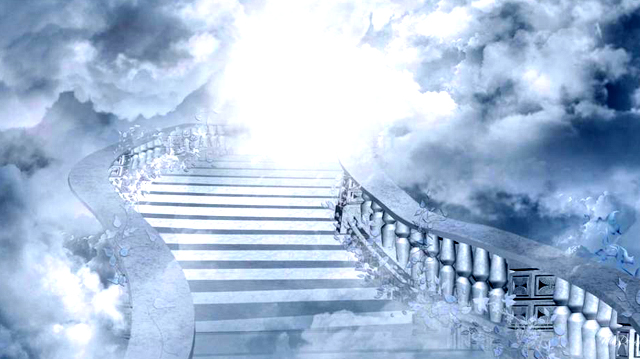
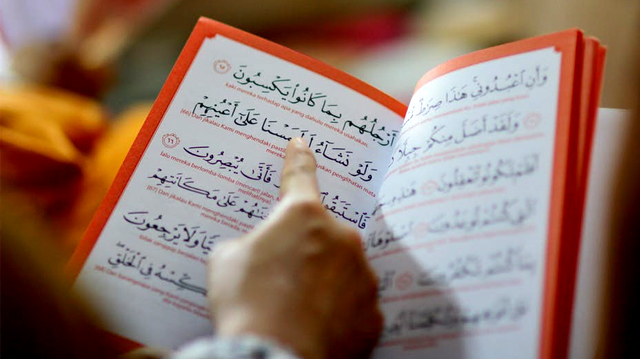
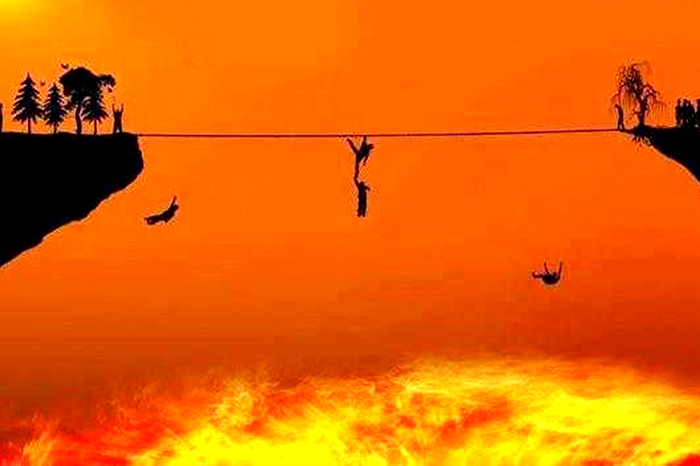

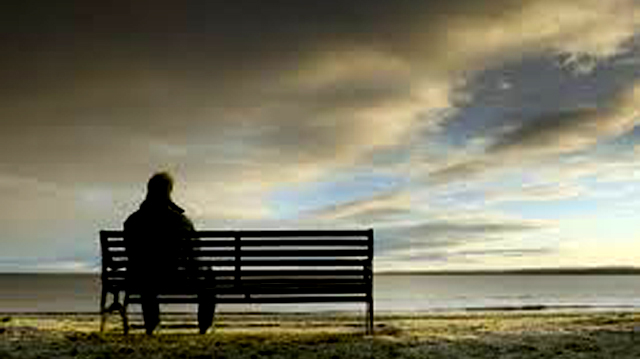

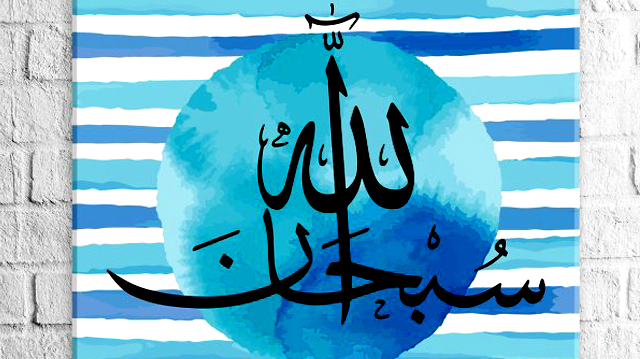
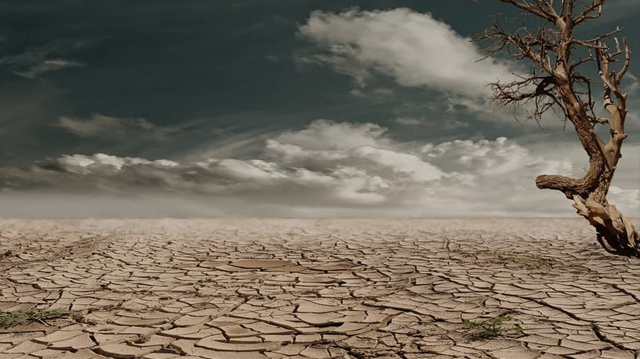
আপনার মূল্যবান মতামত দিন: